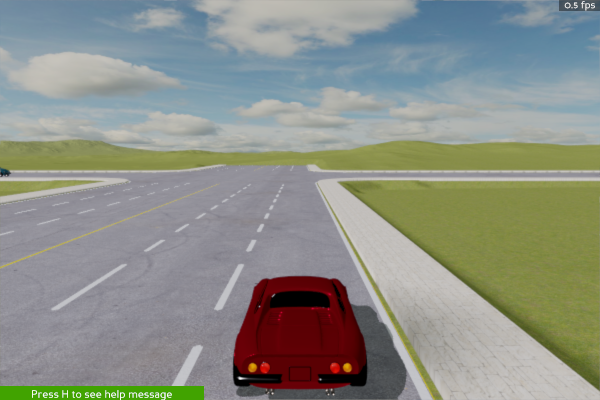Installing MetaDrive
Install MetaDrive
The installation of MetaDrive on different platforms is straightforward and easy! We recommend to use the command following to install:
git clone https://github.com/metadriverse/metadrive.git
cd metadrive
pip install -e .
Note
Using git clone https://github.com/metadriverse/metadrive.git --single-branch
will only pull the main branch and bypass other branches, saving disk space.
It is also allowed to install MetaDrive via pip.However, it is possible that some latest features and bug fixings are not available through PyPI installation:
pip install metadrive-simulator
Pull assets
After having the source code installed, some assets like 3D models are still required to run MetaDrive. Generally, they will be pulled automatically when you run any MetaDrive program for the first time. But you can still pull the asset manually by:
python -m metadrive.pull_asset
Note
All python -m scripts are supposed to be runnable in all places except in the working direction that has a sub-folder called ./metadrive.
Sometimes the assets may be broken or out of date. In this case run the following code to force update the local assets:
python -m metadrive.pull_asset --update
Verify installation
To check whether MetaDrive is successfully installed, please run the following code:
python -m metadrive.examples.profile_metadrive
This script can also verify the efficiency of MetaDrive through the printed messages. The default observation contains information on ego vehicle’s states, Lidar-like cloud points showing neighboring vehicles, and information about navigation and tasks. Besides, you can also try the Pygame-based Top-down rendering (See TopDownObservation), which is also runnable in most headless machine without any special treatment. If the above observation is not enough for your RL algorithms and you wish to use the Panda3D camera to provide realistic RGB images as the observation, please continue reading this section.
Install MetaDrive with headless rendering
The latest MetaDrive is already built to support headless-rendering. But for a double check, run following command:
python -m metadrive.examples.verify_headless_installation
The script will generate two same images to /path/to/metadrive repo/metadrive/examples, one from agent observation, the other from panda3d internal rendering buffer.
Please fetch and check those images from cluster to ensure MetaDrive can draw the scene and capture images correctly.
By default, it only generates images from the main camera. Set `--camera [rgb/depth]` to check other cameras.
Also, `--cuda` flag can be added to test image_on_cuda pipeline for your headless machine.
If the captured main camera images are completed as following, then the installation on headless machine is successful and please move on to ImageStateObservation.

Install MetaDrive with advanced offscreen rendering
Generally, the default installation method supports getting rendered image. In this case, images will be returned as numpy array, which is retrieved from GPU and costs latency. We provide an advanced function to allow accessing images on GPU directly, so that you can read them by Torch or Tensorflow. With such a treatment, the image-based data sampling can be 10x faster! See: https://github.com/metadriverse/metadrive/issues/306
Requirements:
CUDA Runtime >= 12.0
Windows or Linux
Installation:
After cloning the repo, use
pip install -e .[cuda]to install, orpip install -e metadrive-simulator[cuda]if you are using pip.Install Torch:
conda install pytorch==1.12.1 torchvision==0.13.1 torchaudio==0.12.1 cudatoolkit=11.6 -c pytorch -c conda-forge
Install CuPy:
pip install cupy-cuda11xInstall Cuda-Python:
conda install -c nvidia cuda-pythonFor verifying your installation, cd
metadrive/examplesand run:python verify_image_observation.py --cuda
After running the script, if no error messages, then congratulations! It works.
You can also use python verify_image_observation.py --cuda --render to visualize the image observations.
Besides, removing --cuda flag enables benchmarking the original image collection pipeline as a comparison.
And --camera argument is for choosing sensors from [rgb, depth, semantic, main (default)].
Known Issues
We find that Mac with M1 chip is incompatible with Panda3D rendering utilities.
Pygame 1.9.6 causes blank visualization window in Mac with M1 chip. Upgrading to pygame==2.0.0 solves.